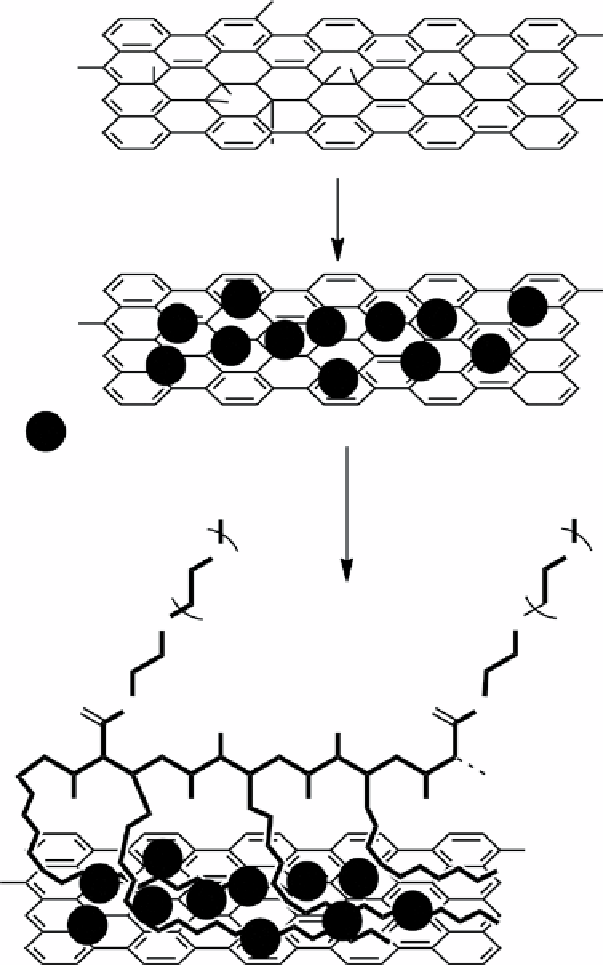Chemistry Reference
In-Depth Information
COOH
COOH
OH
O
O
HOOC
COOH
O
OH
FeCl
3
•6 H
2
O
200°C
COOH
HOOC
=Fe
3
O
4
nanocrystals
C18PMH-PEG
ultrasonication
30 min
n
n
O
O
O
O
O
O
NH
NH
CO
2
H
CO
2
H
CO
2
H
CO
2
H
CO
2
H
CO
2
H
COOH
HOOC
ScheMe 16.6
SPIONs are grown on RGO and modified with PEG for solubility and biocompatibility. Adapted from Ref. [39].
The particles possessed a
T
2
relaxivity of approximately 400 mM
-1
s
-1
and were shown to localise to the xenograft tumour
through the use of an external magnet. MR imaging showed darkening of the tumour following injection of the AuNR-
SPIONs. When the tumour was irradiated with 808 nm laser light, the toxicity increased. The combination of phototherapy
with chemotherapy was most effective.
A novel theranostic multimodal platform based on a soybean oil nanoemulsion (Figure 16.8a
)
was designed to include
the delivery of hydrophobic drugs [41]. The NIR dye Cy7 was used to label the periphery of the particle containing SPIONs
and the therapeutic glucocorticoid prednisolone acetate valerate (PAV, Figure 16.8b) [41]. A solution of the components dis-
solved in chloroform was slowly dropped into an aqueous buffer at 70 °C followed by sonication and concentration using
Vivaspin concentrators with a 100.000 MW cut-off size.
Ex vivo
NIRFI shows accumulation in the liver, kidneys, and
tumour. No difference in RGD-targeted versus nontargeted particles was noted. Tumour growth was inhibited by particles
that delivered PAV. MR imaging showed accumulation in the tumours
in vivo
.
In another NIRFI-MRI system, chlorin e6 was chosen as the NIR dye and as a photosensitiser for photodynamic therapy
(PDT) [42]. Upon irradiation, photosensitisers generate reactive oxygen species (ROS), which wreak havoc on cells in the
immediate proximity, but cause minimal damage to adjacent healthy tissue. Chlorin has a structure similar to that of a por-
phyrin (Figure 16.9) and emits at 660-670 nm [43]. SPIONs (r
2
= 118 mM
-1
s
-1
) were functionalised with APTES followed by
peptide coupling to chlorin. The formation of ROS by chlorin was found to be efficient after conjugation to the nanogel.

